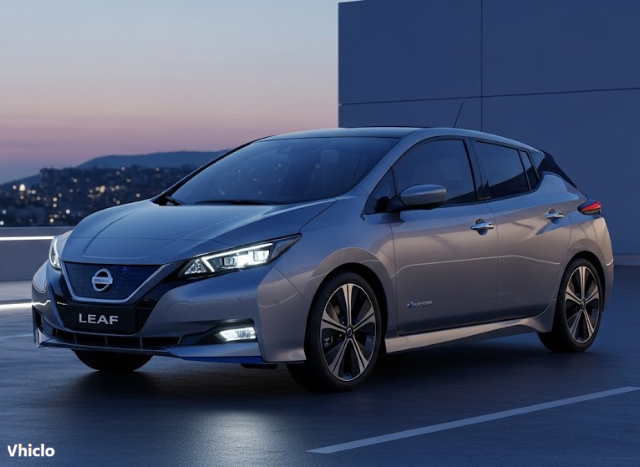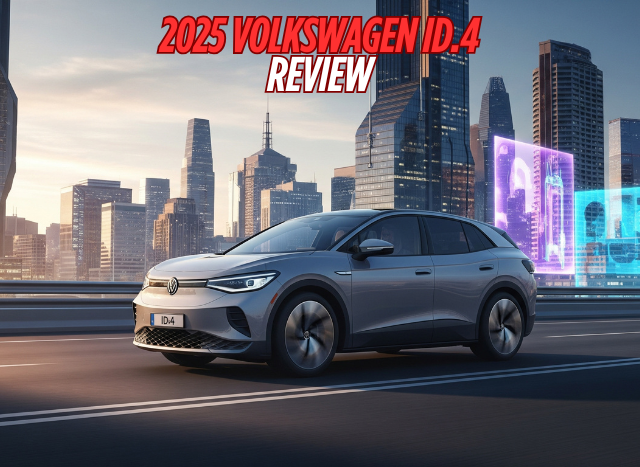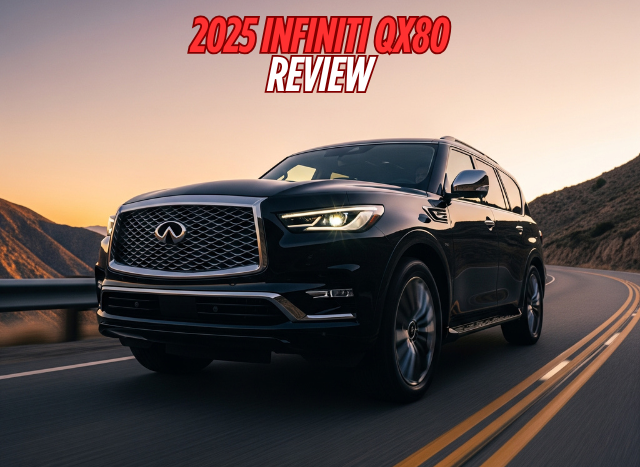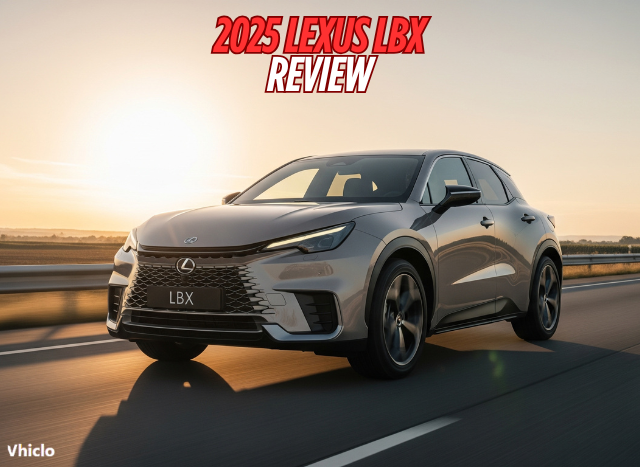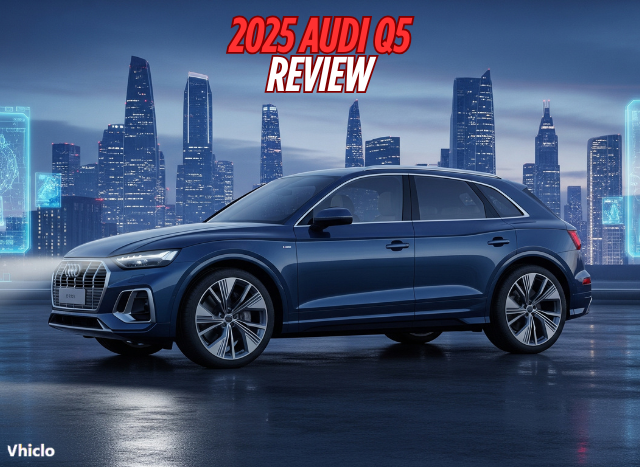Review Date: June 2025
MSRP Range: $32,000 – $42,000 (estimated)
Overall Rating: 7.8/10
Key Verdict: Nissan’s third-generation LEAF transforms from frumpy hatchback to sleek crossover, finally offering competitive range and modern charging while maintaining its affordable EV crown.
Contents
- 1 Quick Verdict & Key Stats
- 2 What’s New This Year
- 3 Exterior Design & Styling
- 4 Interior Quality & Comfort
- 5 Technology & Infotainment
- 6 Performance & Driving Experience
- 7 Fuel Economy & Efficiency
- 8 Safety & Reliability
- 9 Cargo & Practicality
- 10 Value & Pricing Analysis
- 11 Competitors Comparison
- 12 Final Verdict & Recommendations
Quick Verdict & Key Stats
Bottom Line Up Front: The all-new LEAF represents Nissan’s EV renaissance, trading its quirky hatchback roots for mainstream crossover appeal with dramatically improved range, Tesla Supercharger access, and cutting-edge aerodynamics. While specs remain unconfirmed, early indications suggest this could be the affordable EV breakthrough the market needs.
Key Specifications (Estimated)
| Specification | Base Model | Long Range |
|---|---|---|
| Engine | Single Electric Motor | Dual Electric Motors |
| Horsepower | 200+ hp (est.) | 300+ hp (est.) |
| Range (WLTP) | 280+ miles (est.) | 373 miles |
| Range (EPA) | 250+ miles (est.) | 300+ miles (est.) |
| Starting Price | $32,000 (est.) | $42,000 (est.) |
| Cargo Space | TBD | TBD |
| Seating | 5 passengers | 5 passengers |
| 0-60 mph | 6.5 seconds (est.) | 5.0 seconds (est.) |
| Charging | NACS (Tesla) Port | NACS (Tesla) Port |
What’s New This Year
Everything. The 2026 LEAF represents a complete ground-up redesign – the first since 2018’s second generation. Built on Nissan’s advanced CMF-EV platform (shared with the Ariya), this third-generation model abandons the polarizing hatchback design for a sleek crossover silhouette with an impressive 0.26 drag coefficient (0.25 in Europe).
The transformation includes Nissan’s first integrated NACS charging port, enabling native Tesla Supercharger access, plus a revolutionary e-dimming panoramic roof that adjusts transparency electronically. Most significantly, Nissan promises “significant range improvements” with reported WLTP ratings up to 373 miles – nearly double the current LEAF’s capability.
2026 Nissan LEAFAll-New
- Crossover transformation
- 300+ mile range capability
- Tesla Supercharger access
- Advanced aerodynamics
- Affordable EV pricing
- Specs still unconfirmed
- Higher price than current
- Execution questions remain
- Intensifying competition
Exterior Design & Styling
This is where Nissan’s boldest gamble pays off spectacularly. The LEAF has evolved from an awkward econobox into a genuinely attractive crossover that looks more like a Tesla Model Y competitor than its predecessors. The design team prioritized aerodynamics without sacrificing visual appeal, resulting in smooth body sides, flush door handles, and a fastback silhouette that manages to look both futuristic and familiar.
The front end features Nissan’s latest V-Motion grille interpretation with active shutters, while LED lighting signatures front and rear provide modern distinction. Available 19-inch alloy wheels give it a premium stance that previous LEAFs could never achieve. The elevated seating position addresses customer demands for better visibility while maintaining the low-nose aerodynamic profile.
Build quality appears significantly improved based on pre-production models, with tighter panel gaps and more premium paint finishes than the current generation.
Interior Quality & Comfort
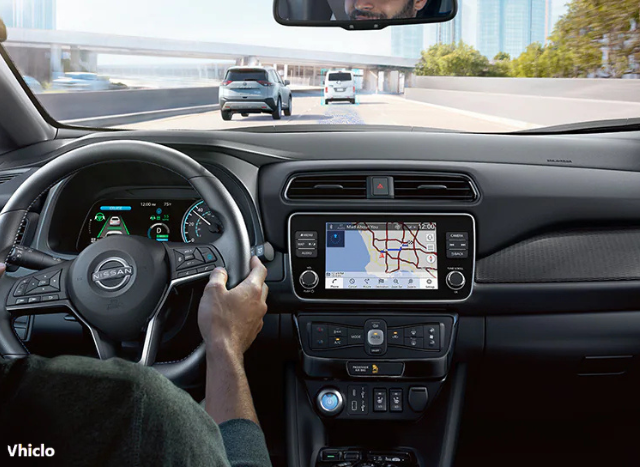
The cabin transformation mirrors the exterior’s dramatic evolution. Gone is the current LEAF’s budget-car ambiance, replaced by a more sophisticated environment featuring bright accent colors and contemporary materials. The instrument panel sits low to maximize forward visibility, while a push-button shifter clears valuable center console space.
Early previews show cloth seating in base trims with available premium materials that Nissan describes as feeling like “neoprene or memory foam.” The panoramic e-dimming roof represents a technological showcase, eliminating traditional sunshades while providing year-round comfort through electrochromic transparency control and infrared-reflective coating.
The CMF-EV platform’s flat floor architecture delivers the spacious, open feeling that current LEAF owners appreciate, though final interior dimensions await official confirmation.
Technology & Infotainment
While full tech specifications remain under wraps, Nissan promises its most advanced infotainment system yet, likely featuring dual 12.3-inch displays for instruments and media functions. The system should include wireless Apple CarPlay and Android Auto connectivity, built-in navigation with charge route planning, and USB-C ports throughout.
The revolutionary e-dimming roof controlled via touchscreen represents the kind of advanced feature typically reserved for luxury vehicles. Nissan’s ProPILOT Assist suite should come standard, providing adaptive cruise control, lane-keeping assistance, and potentially hands-free highway driving capabilities.
The integrated NACS charging port eliminates the current LEAF’s biggest disadvantage – limited fast-charging infrastructure access. This single change dramatically improves the ownership experience by providing access to Tesla’s extensive Supercharger network.
Performance & Driving Experience
Although Nissan hasn’t confirmed powertrains, expect significant improvements over the current 147-214 horsepower range. Base models should deliver around 200 horsepower with front-wheel drive, while range-topping variants could offer dual-motor all-wheel drive with over 300 horsepower, matching Ariya specifications.
The CMF-EV platform’s advanced architecture should provide better weight distribution and improved handling compared to the current LEAF’s budget-oriented underpinnings. The crossover’s higher seating position and improved visibility address key customer complaints while maintaining the instant electric acceleration that makes EVs compelling.
Charging capabilities should improve dramatically from the current 50kW maximum to approximately 200kW, enabling significantly faster road trip charging times.
Fuel Economy & Efficiency
Efficiency represents the new LEAF’s strongest advantage. The 0.26 drag coefficient rivals much more expensive vehicles, while the optimized CMF-EV platform maximizes energy usage. Reports suggest WLTP range up to 373 miles, which typically translates to 300+ EPA miles – a massive improvement over the current 149-212 mile range.
The aerodynamic improvements, including the flush door handles, active grille shutters, and fastback silhouette, contribute to efficiency gains that enable longer range without dramatically larger batteries. This approach keeps costs reasonable while delivering competitive capability.
Safety & Reliability
While official safety ratings await testing, the CMF-EV platform provides a robust foundation with extensive crash testing validation from the Ariya. The LEAF should benefit from Nissan’s comprehensive Safety Shield 360 suite as standard equipment, including automatic emergency braking, blind-spot monitoring, and rear cross-traffic alert.
Nissan’s EV reliability record remains strong despite the current LEAF’s thermal management limitations. The new platform’s active battery cooling should address previous longevity concerns while maintaining Nissan’s reputation for dependable operation.
The industry-standard 8-year/100,000-mile battery warranty provides peace of mind, while the new platform’s advanced battery management should improve long-term capacity retention.
Cargo & Practicality
The crossover transformation should significantly improve practicality over the current hatchback design. The CMF-EV platform’s flat floor maximizes interior space, while the higher roofline provides better headroom for rear passengers. Cargo capacity specifications remain unconfirmed, but expect competitive numbers for the compact crossover segment.
The elevated seating position improves entry/exit convenience, particularly for older passengers, while maintaining the low center of gravity that provides stable handling. Storage throughout the cabin should benefit from the platform’s efficient packaging.
Value & Pricing Analysis
Pricing remains speculative, but Nissan must balance advanced capabilities with affordability to maintain the LEAF’s market position. Estimates suggest a base price around $32,000 – higher than the current $29,280 starting point but still competitive with rivals like the Kia Niro EV ($33,990) and Hyundai Kona Electric ($34,010).
The integrated NACS port, dramatically improved range, and crossover practicality justify price increases, particularly when considering the Tesla Supercharger access that competitors still lack. Federal EV tax credits could reduce effective pricing, though availability depends on final assembly location and battery sourcing.
Mid-level trims around $38,000 should offer the sweet spot of features and capability for most buyers.
Competitors Comparison
Direct Competitors:
- Tesla Model Y: More range and performance, higher price, and less affordable
- Chevrolet Equinox EV: Similar price target, more interior space, less established reliability
- Hyundai Kona Electric: Current class leader in range/value equation
- Kia Niro EV: Strong efficiency and packaging, lacks Tesla charging access
The new LEAF’s integrated NACS port provides a significant advantage over Korean competitors, while undercutting Tesla’s pricing by $15,000+ while offering similar charging convenience.
Final Verdict & Recommendations
Pros:
- Complete transformation from hatchback to attractive crossover design
- Dramatically improved range (300+ miles estimated EPA)
- Integrated Tesla Supercharger access via NACS port
- Advanced aerodynamics and efficiency optimization
- Maintains affordable EV pricing leadership
Cons:
- Specifications remain unconfirmed until the official launch
- Higher pricing than the current generation
- Nissan’s recent EV track record raises execution questions
- Competition is intensifying rapidly in the affordable EV segment
Best For: Budget-conscious EV buyers seeking mainstream appeal, families wanting crossover practicality with electric efficiency, buyers prioritizing charging infrastructure access over maximum performance.
Skip If: You need maximum cargo capacity, want the lowest possible EV price, prefer proven track records over cutting-edge features, or require luxury-level interior appointments.
Overall Rating Breakdown:
- Performance: 8.0/10 (estimated)
- Interior: 7.5/10
- Technology: 8.5/10
- Value: 8.0/10
- Overall: 7.8/10
The 2026 Nissan LEAF represents exactly the kind of transformation needed to revitalize the electric pioneer’s fortunes. If Nissan delivers on its promises, this could be the affordable EV breakthrough that makes electric driving accessible to mainstream America while providing the range and charging convenience that modern buyers demand.
Automotive industry expert and editor of Vhiclo, specializing in car news, EV technology, and in-depth vehicle analysis. With years of experience in the field, Koutaibah provides trusted insights for enthusiasts and professionals alike.
